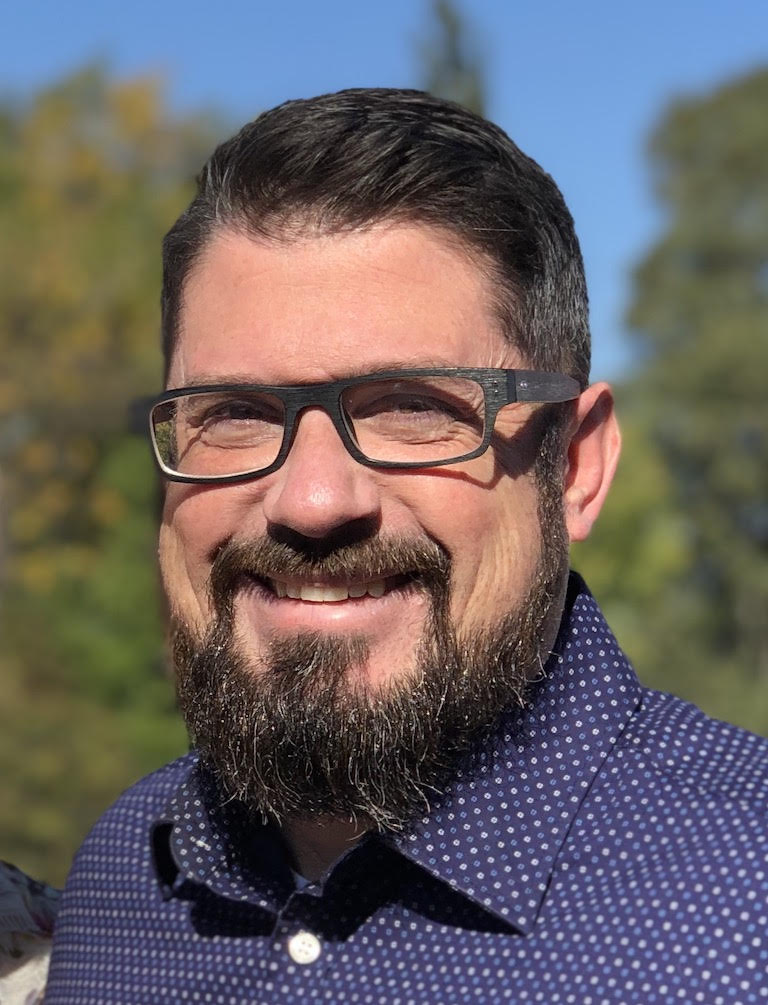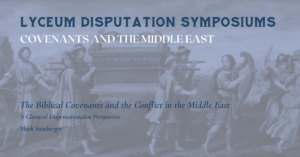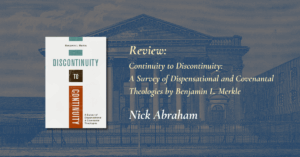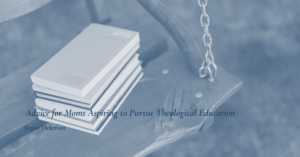I am not a self-proclaimed pastor-theologian, and yet I accept the label when others grant it to me. I believe it is important for all pastors to be theologians to some degree since the study of the Bible necessitates theological reflection. Not everyone in the pastorate will pursue theology to the point of a terminal degree, and that is fine. However, as a pastor who holds advanced degrees, my research over the years has pushed me into areas that I would have never considered without that pursuit. One question I often received during my studies––indeed a question I often asked myself––was, “How will this help the church?” I must admit, when I journey into areas like Incarnation Anyway, that question is a harder one to answer.
If you are unfamiliar with the concept of Incarnation Anyway (IA from here), I should briefly define it before we answer how this is relevant for the person in the pew. IA at its core is a question of speculative theology that ponders if Christ would have become incarnate even if Adam had not sinned. In other words, was the only purpose of the incarnation to redeem mankind from sin?
Questions that Drive Us
As Justus Hunter remarks, one cannot conceive of asking such a question related to the incarnation without also questioning the divine purpose of the eternal Triune God. This “general question” is that in which the conceptual question of Christ’s IA is couched.[1]. I would contend that the first benefit of IA to the church is asking questions that drive us to God’s intention for His glory and the good of His people. The Psalmist has no problem asking “why?” of God. In Psalm 44 he asks, “Why are you sleeping?” after the imperatival “Arise!” and then “Rouse yourself! Do not reject us forever!” These are the Spirit-inspired words of the Psalmist. The Psalmist clearly does not believe that God is inactive. When it comes to passages like this, we understand the rhetorical nature of the question. The Psalmist does not assume that God will not act, but that He will. Similarly, the question of whether God would take on humanity if man had not sinned is about whether the sole intention of the incarnation is due to sin. If we remove sin from the equation does the Scripture point to other purposes for the incarnation? Certainly, because mankind did sin, reconciliation through redemption is key to our understanding God’s purposes in the incarnation, but what else does God intend through the incarnation of the eternal Son?
Created for More
A question that may help frame the discussion is whether God intended more for man than what was initially in the Garden? We affirm that mankind is made in God’s image (Gen. 1:26-27) and that as such mankind is given dominion over the earth to cultivate it and subdue it, to multiply with his own progeny and fill it (Gen 1:28-30). These imperatives which God gives seem to indicate that humanity and creation had not achieved their final telos in the Garden. God gives two commands to Adam which correlate to two trees in the Garden. One leads to death and the other to life. If we look at the tree of life, by extension of the fact that Adam is already living, there seems to be an implication of further or greater life (eternal life) within it. Contrast this with the threat of death in the Tree of Knowledge of Good and Evil coupled with the fact that when Adam and Eve ate of it, they did not die immediately––though I think we can infer that they did spiritually––yet physically they lived with death as imminent. If there was a greater telos that brought with it an elevation of existence for humanity in their imaging of God, we can conceive of an incarnational ministry of the eternal Son in putting on humanity to show humanity how that escalation should look.
Concerning this escalation, Edwin van Driel argues for a superabundant eschaton in which not only is there an impossibility of mankind sinning (an elevation from initial creation for sure), but that the “gifts of the eschaton are intimately bound up with [the] person [of Christ]: they are modeled after, brought about by, and directed at him. The person of Christ is the model for humanity’s transformation (Rom. 8:28, Phil. 3:10, 2 Cor. 3:18). The intimacy by which this is brought about is an intimacy with him (Col. 3:4, John I4:12, I5:1-11).”[2] If we agree with van Driel’s assessment, what can be known about the elevation of humanity cannot be known without the incarnation of the eternal Son. Therefore, IA helps bring into focus an element of our eschatological reality that is true regardless of the sinfulness of humanity. This truth seems helpful to the church since our destiny of fullness in the image of Christ is not dependent on sin and perhaps enhances the hope of that destiny because sin did enter the picture.[3]
Divine Participation
Additionally, these suppositions raise an interesting query concerning the protological nature of the Son’s humanity. What if anything does the incarnation have to do with humanity’s created state? Barth’s view of the Christological priority of creation is well documented.[4] As helpful as it is to contemplate creation through this Christological lens, Barth’s starting point is not with the eternal Son, but rather the incarnational mission of the Son. This seems to not account for the ad intra eternal covenant between the Godhead which we call the covenant of redemption (pactum salutis), “the eternal intra-trinitarian agreement among Father, Son, and Holy Spirit to appoint the Son as mediator and covenant surety, and to create the plan of salvation.”[5] This covenant assumes the fall of humanity (as we would expect), but it also demonstrates the reality of the incarnation as a pattern of humanity (in order for Christ to be a true mediator), a pattern which Paul picks up in other places to demonstrate the fullness of humanity displayed in the incarnated Eternal Son. This idea relates then to the idea of participation in the divine life. As Oliver Crisps submits:
To enable [humanity] to participate in the divine life God must take the initiative and unite himself with one of these creaturely natures, assuming it, and thereby generating an interface between divinity and humanity so that human beings may have a conduit by means of which they may be united God.”[6]
Here we come to another encouragement for the church concerning the incarnation, something that would be true regardless of sin. As Crisp states, the incarnated eternal connects us to the divine as exemplified by Peter when he says:
His divine power has granted to us all things that pertain to life and godliness, through the knowledge of him who called us to his own glory and excellence, by which he has granted to us his precious and very great promises, so that through them you may become partakers of the divine nature, having escaped from the corruption that is in the world because of sinful desire (2 Pet. 1:3-4).
Partaking of the divine nature is after “obtain[ing] a faith of equal standing with [the Apostles] (2 Pet. 1:1)” and “escaping from the corruption that is in the world because of sinful desire.” These phrases, of course, speak of one who has received the forgiveness of sins and the righteousness of Christ, who is in an already/not yet sense both free from the slavery and condemnation of sin, but who also awaits the fullness of that glorification upon Christ’s return. We are also then taking the phrase “partakers of the divine nature” as an already/not yet reality that in one sense we participate in the righteousness of God, but we do not fully grasp what it means to be partakers in the maximum sense. This already/not yet prospect is then further expressed in Peter’s next phrase when he speaks of an “escape from the corruption that is in the world because of sinful desires.” The person united to Christ has the capacity to say “no” to sin and though the escape from this world is not final, it has in a sense begun and the Christian is to adjust their life accordingly. Similarly, the Apostle John states, “Beloved, we are God’s children now, and what we will be has not yet appeared; but we know that when he appears we shall be like him, because we shall see him as he is. And everyone who thus hopes in him purifies himself as he is pure” (1 Jn 3:2-3). The Beatific hope of which John speaks includes elements of being conformed to the Christ image and the ethic of such hope in the purifying of oneself. This leads one to ask if there had been no sin, would there be a need for the Beatific Vision at which time an escalated humanity would appear? In other words, was mankind completely what He was intended to be at creation or was there more and in what sense was His communion with God incomplete, if at all?
We rightly conclude that the normal experience of Adam and Eve in the Garden pre-fall was some sort of “walking” (i.e., proper fellowship) relationship with God, even though the evidence of this is post-fall (Gen 3:8). When God “comes looking” for Adam and Eve their normal experience told them He was present therefore they needed to hide from Him. In Crisp’s rendering of IA, he supposes that even without the fall, there is something even greater for mankind than merely “walking with God.”[7] God intends to also have mankind unite to Him in and through the prototypical image of God in the Eternal Son who would take on flesh.[8]
This eschatological hope of divine participation through the Son highlights a feature of the prelapsarian world that never was, but that is yet future from the postlapsarian reality. It is indeed through our union with Christ through His incarnation and (yes redemption) that we have this sure hope of divine participation.[9] As we consider the already not yet of this participation (vis a vis 1 Jn 3:2-3) we can conclude that there is a pattern of the divine life to which we can aspire in the hope that our walk with God becomes more than what we experience post-fall and more than what our first parents experienced pre-fall. This truth has benefits for the church as we consider the call to be like Christ, as God conforms us to His image, the culmination of which seems best to be understood as concurring with the Beatific Vision. In other words, as John says, those who have this hope purify themselves.
[1] Justus Hunter, If Adam Had Not Sinned, (Washington, D.C.: The Catholic University of America Press, 2020,
14.
[2] Van Driel, Incarnation Anyway, (New York: Oxford University Press, 2008), 152.
[3] I am aware that this raises question concerning lapsarianism, a point which van Driel addresses throughout Incarnation Anyway.
[4] See Colin Brown, “Karl Barth’s Doctrine of Creation,” https://biblicalstudies.org.uk/pdf/churchman/076-02_099.pdf
[5] See J.V. Fesko, “The Covenant of redemption and the Ordo Salutis” TMSJ 33/1 (Spring 2022): 6.
[6] Oliver Crisp, “Incarnation without the Fall.” Journal of Reformed Theology 10 (3): 219.
[7] By “mere” walking I am not suggesting that there is not more to explore concerning the nature of הָלַך and its significance in the pre-fall state and perhaps even its foundation to my argument. There is simply not enough space to unpack all its implications in this article.
[8] See Crisp, “Incarnation without the Fall.” Journal of Reformed Theology 10 (3): 215–33.
[9] As with other features in this article there is not space to explore all of what divine participation (i.e. theosis) entails.
Author
-

Jason Alligood is the Teaching Pastor of Fellowship Bible Church in Peoria, Illinois. He holds a PhD in Systematic Theology from Midwestern Baptist Theological Seminary. He has been married to Amber since 1997 and together they have three children: Jonah, Karis, and Aubrey.
View all posts




